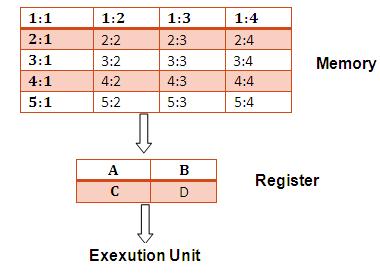In layman terms, computers can be defined as a hierarchical series of metal, silicon and plastic (Hardware) fused with software all around it. These two entities combine to form a powerful machine that can process gigabytes of data in a span of a few seconds. The role played by hardware and software has always been closely studied so as to find which one should play the major part. Major Computer manufacturing firms Apple and Intel have always been arguing on importance of hardware and software in CPU architecture designs. Intel supporters want the hardware to bear more responsibility and software on the easier side. This would impact the hardware designing to be more complex but software coding would be relatively easy. On the other hand, Apple supporters want the hardware to be simple and easy and software to take the major role. Intel’s hardware oriented approach is termed as Complex Instruction Set Computer while that of Apple is Reduced Instruction Set Computer. Let’s have a thorough look on the basics, differences and pros and cons of these two well known CPU architecture designs.

|
|
Instruction Count
|
CPI
|
Clock
|
|
Program
|
x
|
|
|
|
Compiler
|
x
|
x
|
|
|
Instruction Set Architecture
|
x
|
x
|
x
|
|
Microarchitecture
|
|
x
|
x
|
|
Physical Design
|
|
|
x
|

CISC Architecture
Introduced in 1970, this CISC design is a 32 bit processor with 4 general purpose and 4 64-bit floating point registers.
RISC Architecture
RISC, or Reduced Instruction Set Computer is a type of microprocessor architecture that utilizes a small, highly-optimized set of instructions, rather than a more specialized set of instructions often found in other types of architectures. It is a dramatic departure from historical architectures.

Example of RISC Architecture
RISC v/s CISC : An Example

CISC design would try to finish the task in the minimum possible instructions by implementing hardware which could understand and execute series of operations. Thus the processor would come with a specific instruction ‘MUL’ in its instruction set. ‘MUL’ will loads the two values from the memory into separate registers, multiplies the operands in the execution unit, and then stores the product in the appropriate location. So, the entire task of multiplying two numbers can be completed with one instruction:
RISC processors use simple instructions that can be executed within a clock cycle. Thus, ‘MUL’ instruction will be divided into three instructions.
2. Since each instruction requires only one clock cycle to execute, the entire program will execute in approximately the same amount of time as the multi-cycle “MUL” command.
3. RISC “reduced instructions” require less transistors of hardware space than the complex instructions, leaving more room for general purpose registers.
4. As all of the instructions execute in a uniform amount of time (i.e. one clock), pipelining is possible.
Comparison & Convergence
|
CISC
|
RISC
|
|
Emphasis on hardware
|
Emphasis on software
|
|
Includes multi-clock complex instructions
|
Single-clock, reduced instruction only
|
|
Memory-to-memory:
“LOAD” and “STORE” incorporated in
Instructions
|
Register to register:
“LOAD” and “STORE” are
independent instructions
|
|
Small code sizes, high cycles per second
|
Low cycles per second, large code
Sizes
|
|
Transistors used for storing complex
Instructions
|
Spends more transistors on memory registers
|
Filed Under: Articles


Questions related to this article?
👉Ask and discuss on EDAboard.com and Electro-Tech-Online.com forums.
Tell Us What You Think!!
You must be logged in to post a comment.